Griot Haitian food was an exploration that we were really, really looking forward to.
We’d had some background into Haitian foods (and how distinctly different it is from other Caribbean cuisines), so we already had a pretty strong inkling that this griot would end up a pretty magical recipe.
Even then, we still completely underestimated everything, both the griot as well as the history behind it and Haiti on the whole.
We try not to say this lightly (or at all often), but griot was one “WOW” recipe that certainly stopped us in our own tracks.

Griot, Haiti, and its Western African Roots
Much like many of the other occupied Caribbean colonies, Haiti has a very complicated, diverse and unfortunately tragic history. There are, however, some slight but very key differences that have led the nation on a path far different from its counterparts.
Here is where it would be helpful to give a hugely abridged version of Haiti’s path towards independent sovereign nation. This synopsis in no way does any justice to how intricate and elaborate Haiti’s history is, but it will have to do for now. If there’s one suggestion we can make for those so inclined, do look into a more detailed history and enjoy the journey.
Anyway, Haiti originally started out as an island inhabited by the Arawak/Taíno people (whom we met while exploring Jamaica and the art of jerk). For millennia, the island of Quisqueya, a land mass encompassing both modern-day Haiti and the Dominican Republic, led a fairly uneventful and peaceful existence relative to the rest of the world.
This all changed when, like with most other lands in the region, Christopher Columbus led colonizing expeditions on behalf of the Spanish Empire. On his first voyage, Columbus landed in Quisqueya and swiftly captured and renamed the land as Hispaniola.
Over the next few centuries, Hispainola became a highly valuable and hotly contested territory for many of the colonizing powers, namely the French, English, Spanish and Dutch. Following several decades of intense fighting and bucaneering (including a Spanish desertion), the French ultimately captured and established their own colony of Saint Dominigue in the western third of the Hispanola island.
Enslavement and the Gens de Couleur
The establishment of a formalized French colony – as opposed to one cobbled together by pirate and buccaneer coalitions – brought the rise of agricultural industries like tobacco, indigo, cotton and cacao. To help meet the labor supply for production of these lucrative areas, French Emperor Louis XIV began what resulted in a massive importation of enslaved Western Africans. Here, the slave import was massive: the trade’s apex from 1783-91 brought nearly 800,000 West African slaves to Saint Dominigue.
While this was a fairly similar trajectory followed by all West Indie colonies, Haiti’s history diverges from this point on because of two parallel trends.
First, thousands of slaves were successful in fleeing from their masters and creating remote colonies of “maroons.” In addition to fighting and rebelling against the French oppression, it was a point of pride within these colonies to stay true and retain as many customs from their Western African roots.
Meanwhile, another subset of Saint Dominigue’s freed black population grew wealthy and influential as the colony prospered economically. This population – labeled as gens de couleur or “people of color” – for a time amassed amounts of power otherwise unheard of in other parts of the world.
Once the French attempted to enact discriminatory laws against the gens de couleur, however, the interests of these two populations aligned. To make a long story short, the French Revolution back in mainland France triggered a 15-year Haitian Revolution wherein a well-organized and united black population succeeded in driving out the French and abolishing slavery by 1804.
After the Revolution, Saint Dominigue was renamed to Haiti, a Taíno word meaning “Land of the Mountains,” as it became the first independent sovereign nation in the West Indies.
The West African Griot
From the time between the end of the slave trade in 1791 and the creation of Haiti in 1804, much of West African culture was retained throughout the black population, especially among the former slaves. The Haitian Vodou (or voodoo) religion, for example, was a popular religion developed as an evolution of West African practices that had been previously banned under French rule. Moreover, Haitian kreyol, the most pervasive language in the country, is technically a French dialect but with huge influences from West African tongues.
For griot, while the connection itself is a bit fuzzy, the Haitian dish serves as an homage to the griot, a person of high standing across many West African cultures.
In the West African context, the griot encompassed many different roles for his community. Traditionally, a griot could be anything from the local historian, musician, diplomat, teacher, warrior, master of ceremony and tribal spokesperson. In some cases, the griot would either serve as the leader of a community himself or as a close advisor.
The griot tradition has remained remarkably robust over the centuries, and today there remain many griots throughout countries like Senegal, Mauritania, Burkina Faso, the Ivory Coast and many more.

About the Recipe
Again, the reasoning and linkage between the food and the profession is a bit fuzzy, but there’s one underlying commonality between the two: they’re very special to their respective cultures.
For griot the recipe, especially in earlier times when pork meat was more scarce and high cost, the dish was reserved for more special occasions and festivals. It has become slightly more ubiquitous nowadays, but it has retained its place in Haitians’ hearts and is often considered the country’s national dish.
As with other recipes from Caribbean cuisines, however, griot is a recipe that does require some time, patience and a decent helping of tender loving care.
The first step is to set your pork into a citrusy, sweet-yet-spicy and tangy marinade. The base for the marinade – and the key to it all – lies in sour orange juice. The sour orange is a variety of orange in Haiti that has more acidity than regular orange juice and offers a distinct taste to your griot. In the absence of finding true sour oranges, though, swapping two-parts regular orange juice with one-part lemon/lime juice will make for an adequate enough substitution.
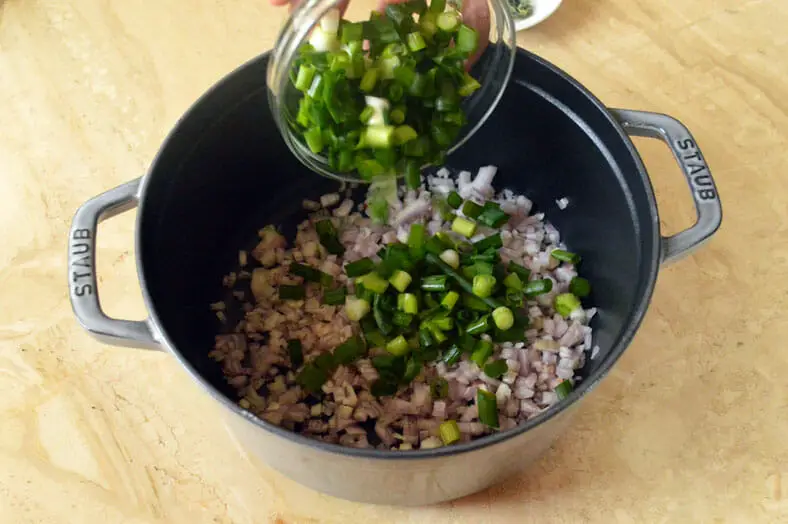
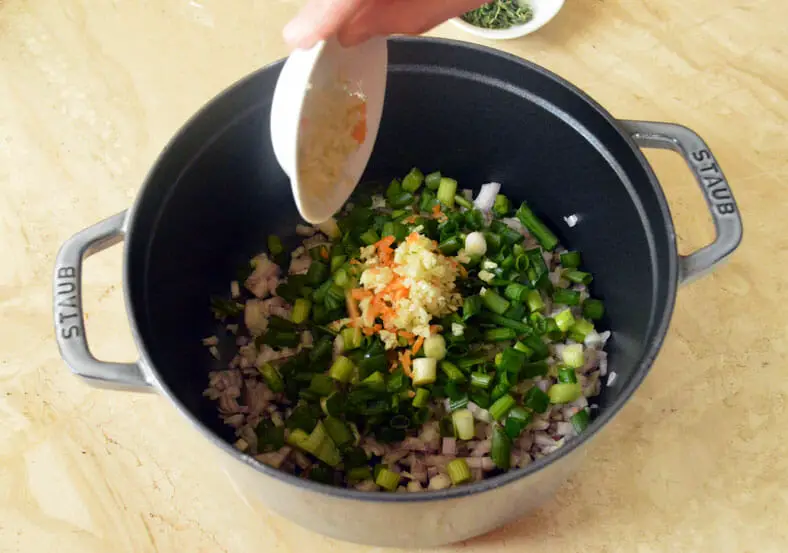



Once you have your marinade, you’d ideally like to have your pork soak in the flavors for at least an overnight. While this isn’t necessarily required to be truly authentic griot (even an hour would do), you’re only doing the dish more a favor by allowing it to marinade for longer.
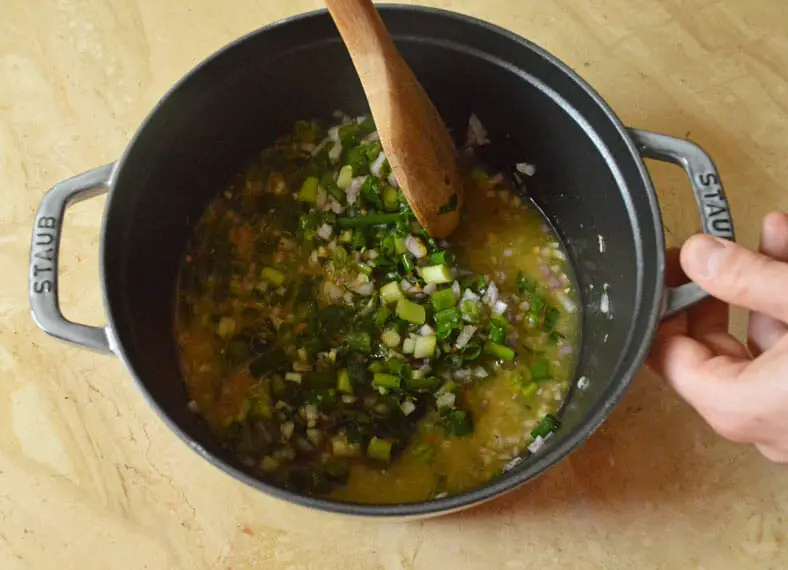
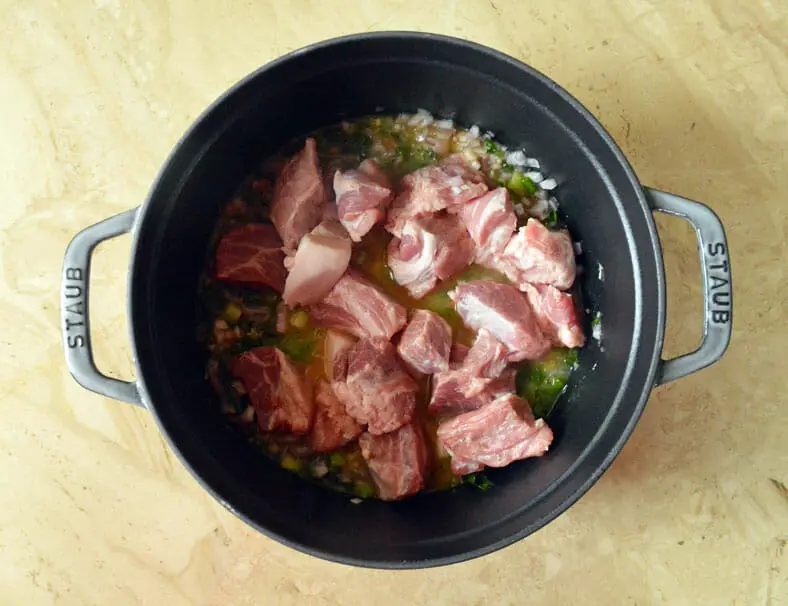
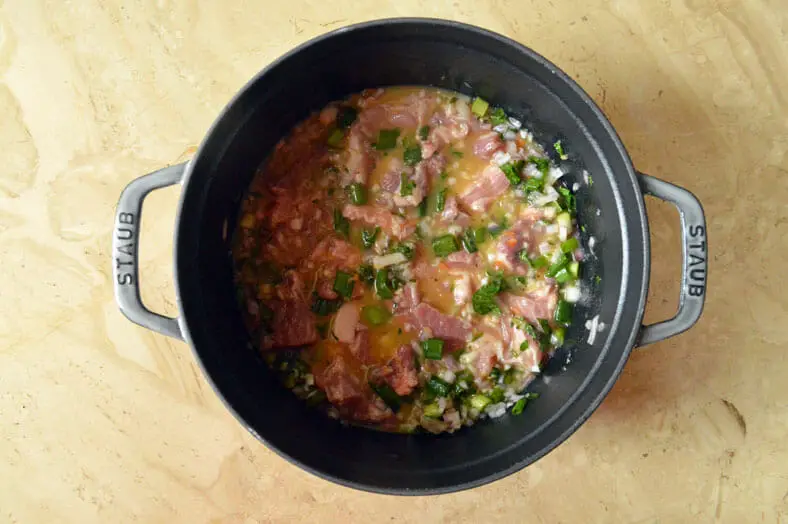
What makes griot even more intriguing a recipe is that, once marinating is done, the meat is cooked twice! The first step is to boil the pieces of pork in the marinade itself, which helps infuse more of the marinade’s flavors into the recipe. As the pork has cooked and poached nicely in the marinade juices, you fish out the piece of pork, strain the marinade and set aside.
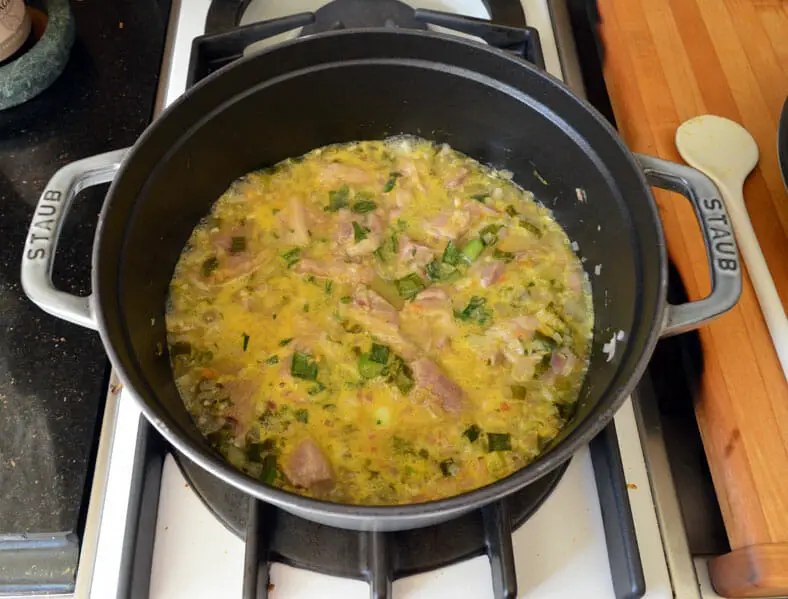


Sos Ti-Malice
Prior to the “second cooking” of your griot, it’s very useful here to create some sos Ti-Malice. This sauce is popular for any type of Haitian dish, but it adds a lot of flair alongside griot especially. The legend behind the sauce is that a gentleman named Ti-Malice tried to create an incredibly spicy sauce to deter his friend, Bouki, from eating all his food, but Bouki ended up loving the sauce and spread the word about it.
One particular way to making a very savory sos Ti-Malice – also a little lighter on the intense heat – is to add some leftover marinade from your griot to a pot simmering with garlic, shallots, scotch bonnet (habanero) peppers and additional liquid. This sauce can simmer and reduce while you finish the rest of the griot recipe.
Finally, as your sos Ti-Malice is simmering away, the most traditional way to finish your griot is by frying in oil until you get a nice, crispy brown texture on the outside of the meat.

Our Take on the Recipe
One particularly enjoyable challenge we had with this griot and other Haitian recipes was to find ways in which to make inherently-heavy recipes slightly healthier. As a cuisine relatively loaded on a potent combination carbohydrates and fats, this proved to be quite the task.
Nevertheless, we seemed to have found just the trick for griot based off this fantastic original reference recipe.
For starters, we had to start by scaling down the proportions of this recipe. Even at 1 lb of pork meat (instead of the original 3), there was more than enough griot for 4 people to comfortably enjoy. Also, an important part of the recipe involves pre-cleaning the pork with citrus prior to marinating, which we included in our version.
In the marinade itself, we ended up having to substitute regular oranges for sour oranges. It was quite the adventure to find true sour oranges, and their quality wasn’t all too good even when we found some. Instead, we hoped to recreate the same effect by adding in some lime juice.
Also in the marinade were a few extra added aromatic ingredients like garlic and shallots. These two ingredients in particular appeared in some recipes while not appearing in others. Simply because we’re fans of both and figured they’d be a flavorful addition, we added them in for good measure.
One particular component we did add to our recipe as well was a slightly sweetened version of sos Ti-Malice. Depending on the recipe you find, sos Ti-Malice can have all sorts of ingredients added to its acidic liquid/habanero base. In our case, we aggregated various inclusions of ingredients like honey and Dijon mustard to create a more balanced out and less intense flavor to an already delicious griot.
Finally, the biggest adjustment we made came in the cooking of the griot itself. Instead of boiling over a stove then frying in oil, we opted for a “boil and broil” using an oven instead. For the boiling, we brought a Dutch oven with our griot to a very quick simmer on a stove before transferring it into an oven to bake. This was an interesting tactic of using indirect heat that we thought was a good way to prevent too much heat from coming directly on the meat and marinade itself. Then, instead of frying, we opted for a healthier broil option to get the outside browning and “second cooking” effect needed.
Regardless of how you prepare it, though, griot is an incredibly fragrant dish that is a perfect symbol of the more diverse “Caribbean outlier” cuisine that it is.
With a bit of pikliz and some sos Ti-Malice, griot really does have that “WOW” factor that few other dishes have.
How do you prepare your griot? Comment below!


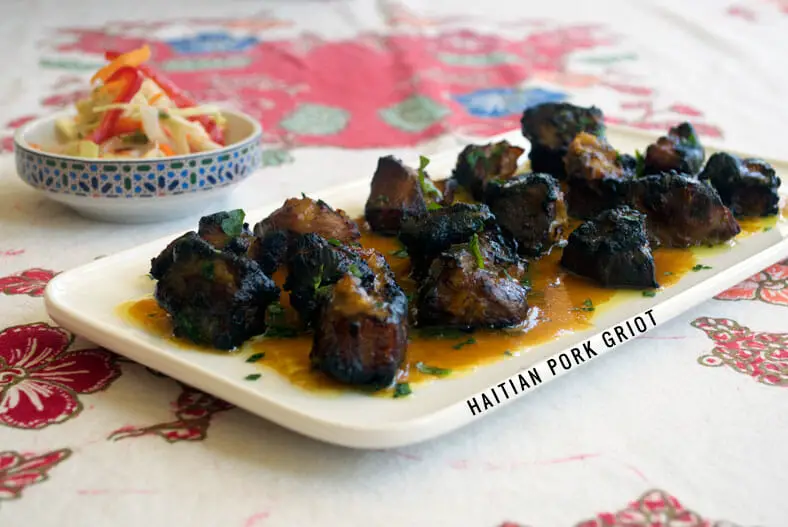
I am 1/2 Haitian and so happy to see my cuisine being represented in the blogosphere. You did a very good representation of it. This is one of my all time favorite haitian dishes
Wow, Mireille – that’s so awesome to hear! We’re really happy that we stayed true to the dish, especially because it’s such an amazing one. Then again… all the Haitian dishes we’ve tested are amazing 🙂
As one who doesn’t know much about Haitian history, I appreciated the thumbnail sketch. But truly, it’s the explanation of griot and Sos-T Malice that had me reading and re-reading. I love your manner of making the dish healthier and a bit more accessible to non-Haitians. My only quibble is that your 15 minutes of prep time seems skimpy to me – with all these steps and the need to attend to the pork when it’s broiling (and maybe I’m a slower cook than most), I’d figure on at least 30-40 minutes. I looked up pikliz and found out that it’s a spicy cabbage. (That’s what is in the background in the first photo, right?) Do the Haitians serve this with a starch? If so, would it be rice or something else. Yumming & stumbling this post.
Great point on the prep time, Laura. We actually went back in and updated the timing to also account for the time needed to marinade, so that should give a little more “wiggle room” for the cooking… which we certainly needed the first couple times as well 🙂
You’re absolutely right that that’s pikliz in the background. It’s a spicy cabbage that is best when it’s been allowed to pickle for at least 3 days and can keep for up to two weeks. It’s so easy to make and really goes with anything. Since we started testing Haitian recipes, we’ve continually kept making pikliz to accompany all sorts of other dishes too!
Generally, any Haitian plate would be incomplete without rice and/or beans (and there are recipes featuring both). For this particular post, we opted to stay away from the starches, although it wouldn’t be a truly complete meal without some
Laura@MotherKnowsBest
Griot is a dish that has roots in its use as an offering and collective meal for the Lwa (namely the various Ogou’s, Ezili Dantor, many Ghede, etc.). The history of Haitian cuisine is as dramatic, depressing, and galvanizing as the history of Haiti and Vodou itself- largely because they are all deeply interrelated. Of course it’s absolutely delicious as well. This would likely be served with beans and rice simmered in coconut milk~ maybe some fried plantain
dishes (sweet or savory). I can’t wait to try this version- though I think I’ll still go ahead and pan fry for that perfect griot consistency and slow simmer longer to be certain they’re perfectly tender before frying. Exciting!